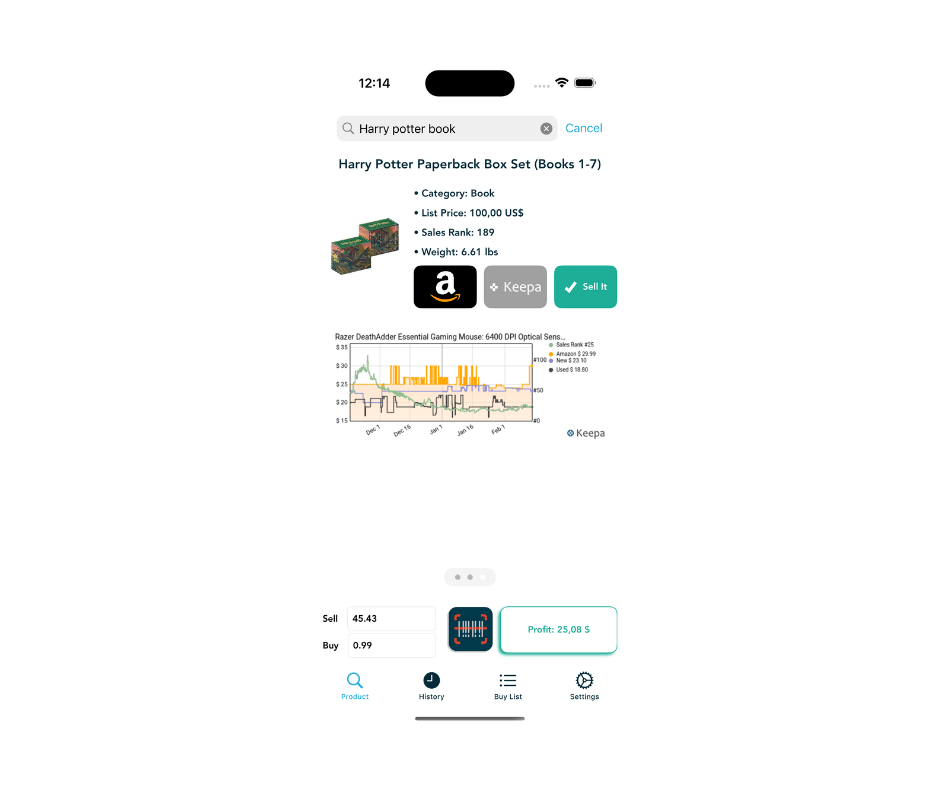
Welcome back to our series on Amazon niche market research. Today we talk about tools like the Product Opportunity Explorer and how you can use them to identify profitable Amazon niches.
As we pointed out in Part 1 of our series titled Niche Markets on Amazon, AI poses some new challenges for Amazon sellers. So, there’s no denying that a little bit of Amazon niche market research could go a long way if you’re trying to keep your edge in this highly competitive landscape.
Whether you’re a seasoned seller looking to expand your product offering or a newcomer seeking to establish your presence on Amazon, you’re probably busy trying to explore the world of niche markets. So, let’s look at how you can identify profitable Amazon niches that align with your business.
How to Discover Niche Opportunities
Google Trends for Niche Product Research
This is an accessible and straightforward way to assess the popularity and seasonality of a product. With search data filtered by state and displayed over weeks, months, or even decades, you can see how likely internet users are to maintain their interest in a sought-after product or feature.
Amazon Bestseller List Analysis
It may sound strange, but popular items can point you to new niches. So, every now and then, check lists like Bestsellers, Movers & Shakers, Hot New Releases, Most Wished For, and Gift Ideas. These products are, by definition, not niche items. But they can show you what customers are looking for.
As Amazon explains in its guide Product ideas in 2024, you should focus on products with high demand, low competition, and disappointed reviewers. Perhaps you can find ways to tap into this unmet customer demand with a similar product that’s more convenient, versatile, and well-designed.
Product Opportunity Explorer
By far the easiest way to find a new niche is to check the Product Opportunity Explorer in Seller CentralAmazon Seller Central is a portal or a h… More. It shows niches recommended by Amazon based on selling history and the categories you sell in. Niche metrics are refreshed weekly and the product lists grow every month.
How to Make the Most of Amazon Product Opportunity Explorer
The Product Opportunity Explorer Overview guides you through the whole process. Starting with the category you’re interested in, drill down further and use the search bar to find niches for specific terms. Filter by number of products, search volume fluctuations, and units sold to find niches with unmet demand.
This will reveal the Niche Details dashboard. Here you’ll find products that attract 80% of clicks after searching for your chosen terms. The Products table also provides information on when each item was launched, how many clicks it garnered, its popularity, and how happy buyers are with it. You can gain many other insights from this table, such as:
- Coupled with a large number of ratings, a high Click Share value means user testimony is important to buyers.
- You can compare several products to see if the Click Share is very dependent on price (i.e., price elasticity).
- Note any common factors in their images or titles that could boost Click Share (e.g., size, compatibility).
Moving on to the Search Terms menu, it lets you see Search Volume, Click Share, Conversion Rate, and the top 3 clicked products for every niche. A high QoQ growth rate in search volume and low click share could point to a type of product that customers need but simply can’t find in search results.
The Insights tab offers a series of metrics on products, brands, and customer experience for this niche. The table compares metrics over the last 24 hours, 90 days, and year. They show how saturated the niche is, the launch potential for new products, and the need for additional products, services, ads, or units.
Next, the Niche Trends tab provides a visual representation of seasonality, historical average price, and search performance over time. This customizable graph shows 2 metrics side by side to help you better understand consumer behavior in Amazon niches and how much potential the niche has. For instance, you can:
- Compare Search Volume with Conversion Rate to find how well this niche converts.
- Check the Selling Partner Count against Search Volume to gauge the competition.
Finally, check the Customer ReviewReview and feedback are sometimes used i… More Insights page to see review snippets. You can also see how often a feature is mentioned. A bar chart helps you compare their impact. So, if you want to offer a better product, simply focus on the most impactful negative aspects when you develop your product’s USPs.
Tips on Amazon Niche Market Research
Use a Scouting Tool
Tools like Profit Bandit can help you identify lucrative categories, trending products, and untapped niches. Sales rankThe sales rank of products on Amazon ind… More history, profit calculations, and built-in Keepa price trend graphs are just some of the features made available with this scanning app. Also, product restriction alerts will help you steer clear of items you can’t sell on Amazon.

Check Historical Sales Data
Depending on your chosen niche, you may be able to access historical sales data for it. You can also export conversion rates and search metrics for a whole list of products. Then use product research tools like Profit Bandit with built-in sales rankThe sales rank of products on Amazon ind… More data alongside Amazon sales estimators to figure out how much you can expect to sell from the moment you launch.
Evaluate Your Competition
Aside from the Selling Partner Count and Brand Count figures in Niche Trends, there are countless other ways to quantify, assess, and even profile other sellers to create a comprehensive competitor analysis. As explained in our post titled Find and Analyze Your Competition on Amazon, you can examine your competitors’ stores, listings, and feedbackA performance rating on a scale of 1 to … More to identify market gaps and ways that you can differentiate.
Listen to Customers
You can gain valuable feedback not just from Customer ReviewReview and feedback are sometimes used i… More Insights, but also from content on other e-commerce websites. Once you’ve identified your niche products and categories, you can comb the internet or resort to review management software to collect and analyze customer sentiment and suggestions.
Understand Consumer Behavior
Once you have a good grasp on the interests of your target customers, it’s time to think about all the ways they may go about fulfilling them. Map out questions about the features they’re looking for, prioritize them, think about where they might find them (on and off Amazon), and how you can align your offering so that you make that journey shorter through ads, product enhancement, affiliate marketing, etc.
Make a Niche Goal Checklist
Create a comprehensive checklist for your end goal. Explore criteria such as sales volume, average sales price, profit margins, seasonality, and how they align with your business goals. Consider how important they are to you, what your business can handle, and if you have the storage capacity and the manpower to provide it.
As you can see, Amazon niche market research is as time-consuming as it is crucial. But with the right tools and techniques, it isn’t all that hard to identify profitable Amazon niches. Follow these easy tips to meet new customer needs, diversity your listings, differentiate your products, and reach new heights on Amazon.

Melanie takes an active interest in all things Amazon. She keeps an eye on the latest developments and keeps Amazon sellers up to speed.





